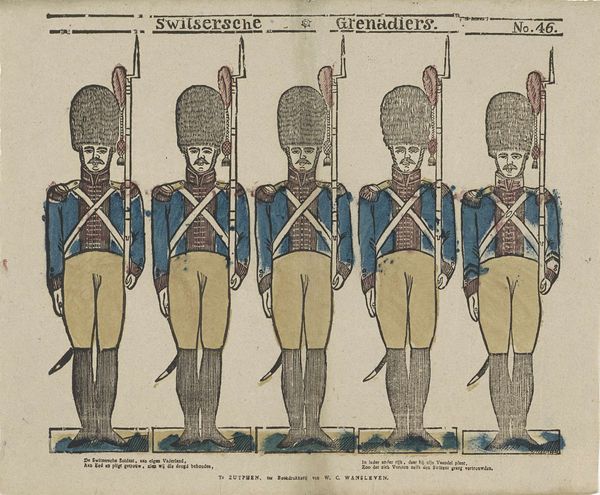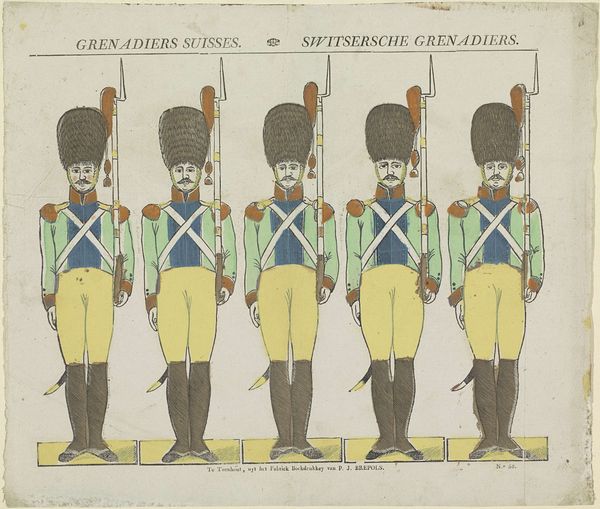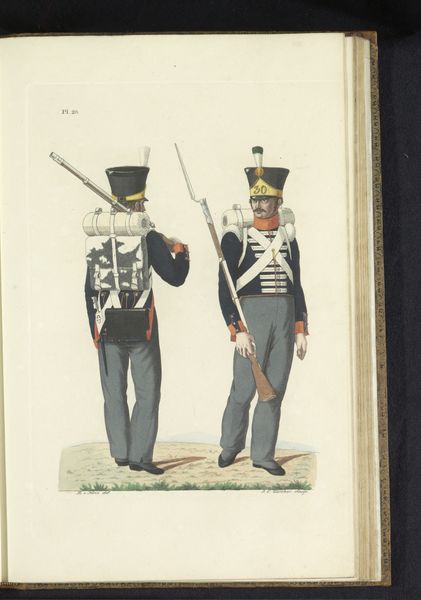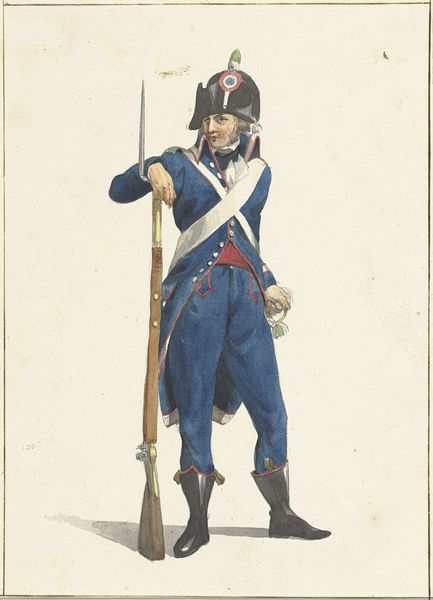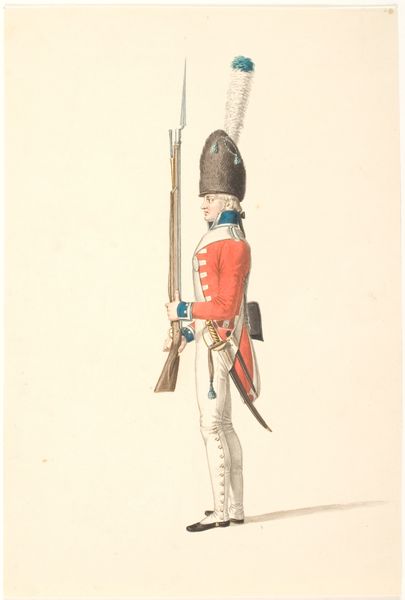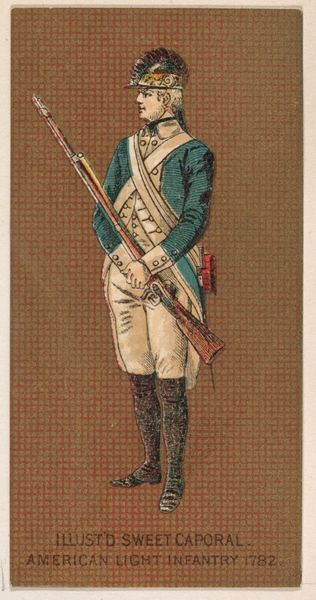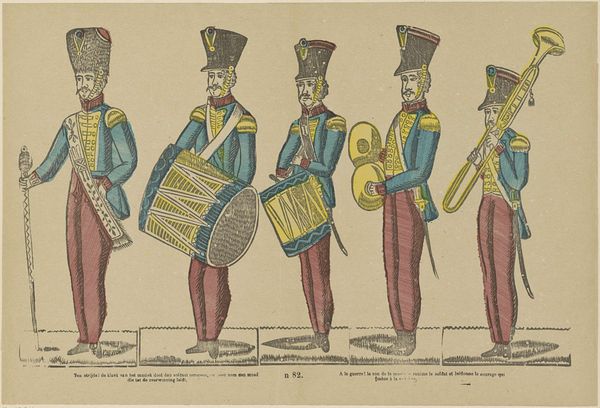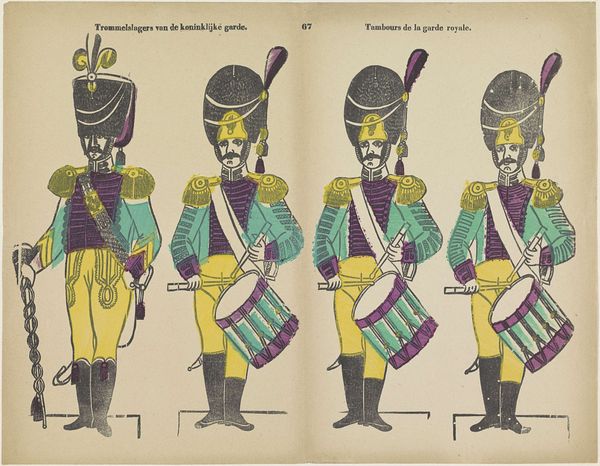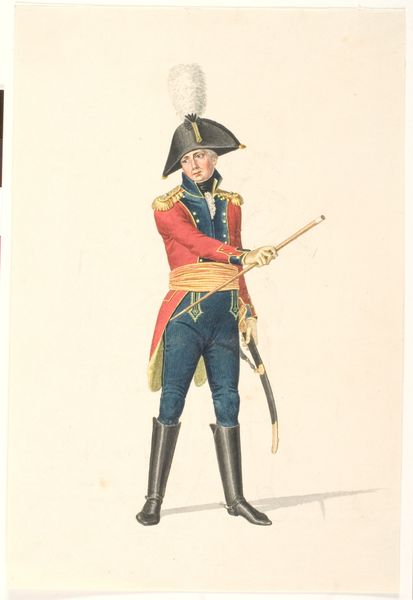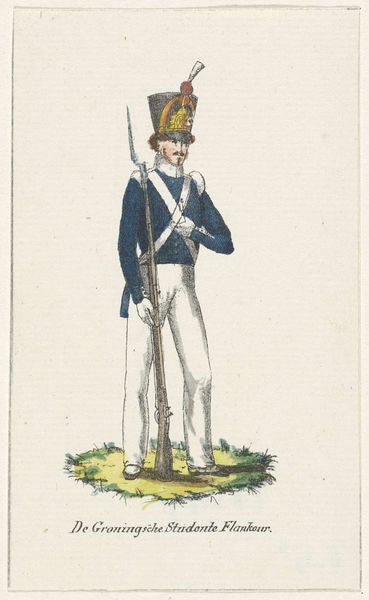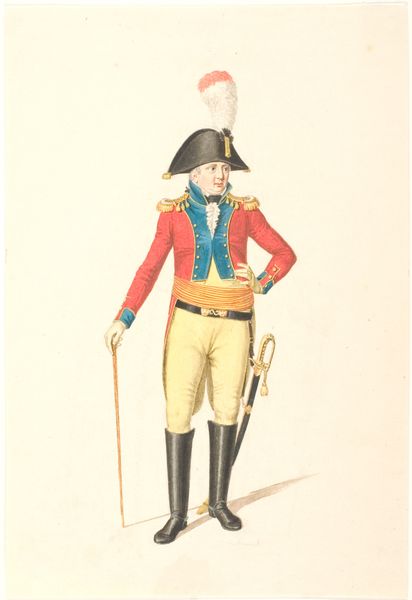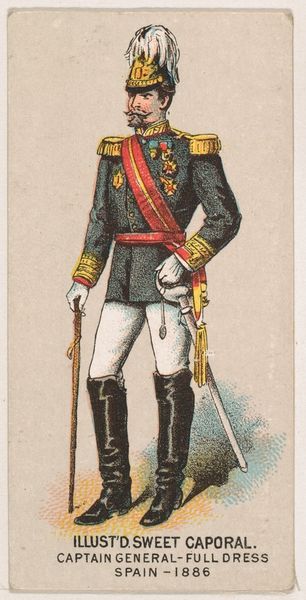
lithograph, print, etching
#
portrait
#
lithograph
# print
#
etching
#
historical fashion
#
traditional dress
#
romanticism
#
history-painting
#
textile design
Dimensions: height 309 mm, width 375 mm
Copyright: Rijks Museum: Open Domain
Editor: We’re looking at “Grenadiers Suisses/Zwitsersche grenadiers,” a lithograph and etching by Philippus Jacobus Brepols, sometime between 1800 and 1833. There's a sense of rigid uniformity in the portrayal of these five soldiers. The almost cartoonish rendering of their huge hats and stilted poses gives the piece a naive quality. What historical contexts might be informing our understanding of this work? Curator: This print speaks volumes about the evolving portrayal of military figures and their connection to national identity. Note the title given in both French and Dutch. What does this imply about its intended audience? Who were the Swiss Grenadiers in relation to the region, or even the emerging idea of nation? Consider, too, how printmaking democratized imagery, circulating ideas of military prowess beyond elite circles. How might the somewhat stylized and, as you said, uniform depiction reinforce ideas about collective national strength? Editor: So it's not just about showing soldiers, but also about visually constructing a sense of national pride? The almost mass-produced feeling reinforces that idea. Curator: Precisely. And consider the Romanticism tag; despite the formal presentation, there's a hint of idealization. Do you see the potential for a bit of political theatre here? Editor: I think I do. So the piece serves as both a document of military attire and a piece of propaganda. Curator: In a way, yes. It blurs the lines between representation and construction. It invites us to question how power uses imagery to shape collective identity. I see it as an invitation for questioning assumptions on the romanticising the war itself. Editor: I didn't initially see that blend of documentary and idealisation. The work is richer now that I am more aware of how the public sphere shapes our understanding. Curator: I concur. Examining this print reveals the profound connections between art, social history, and the forging of national consciousness.
Comments
No comments
Be the first to comment and join the conversation on the ultimate creative platform.
